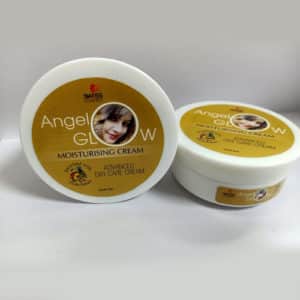Clindamycin and Nicotinamide Gel
₹20.00
ULTRA-SHINE GEL
Pack: 20gm
Clindamycin and Nicotinamide Gel are topical medications used for the treatment of acne. combines two active ingredients: clindamycin, an antibiotic, and nicotinamide, a form of vitamin B3.
Clindamycin is a type of medicine that fights against bacteria. It is in a group called lincosamides. It works by inhibiting the growth of bacteria on the skin, particularly Propionibacterium acnes, which is commonly associated with acne. By reducing the number of bacteria, clindamycin helps to decrease inflammation and prevent the formation of new acne lesions.
Nicotinamide, also known as niacinamide, is a form of vitamin B3 that has anti-inflammatory properties. It helps to reduce redness and swelling associated with acne, and it also helps to regulate sebum production, which can contribute to the development of acne.
When applied topically as a gel, clindamycin, and nicotinamide work together to target multiple factors involved in acne formation. The gel is typically applied to clean, dry skin once or twice daily, depending on the instructions provided by a healthcare professional.
Overall, clindamycin and nicotinamide gel is a combination medication that provides both antibacterial and anti-inflammatory effects, making it an effective option for the topical treatment of acne.
How to use Clindamycin and Nicotinamide Gel
To use Clindamycin and Nicotinamide Gel, follow these instructions:
- Clean your face with a mild soap and gently dry it by patting it.
- Put a little bit of gel on the areas of your skin that are affected.
- Gently rub the gel onto your skin until it is completely soaked in.
- Make sure to wash your hands well after putting on the gel.
It is very important to follow your doctor’s instructions and take this medicine exactly as they tell you to. Usually, you should put on the gel two times a day, once in the morning and once at night. Make sure to not get the gel in your eyes, nose, or mouth, and don’t put it on any cuts or sores on your skin. If you feel irritated or uncomfortable, please stop using the gel and call your doctor.
Benefits of Clindamycin and Nicotinamide Gel
Clindamycin and nicotinamide gel is a combination medication commonly used in the treatment of acne. There are some benefits of using this gel:
Antibacterial action: Clindamycin is an antibiotic that works by inhibiting the growth of bacteria on the skin, particularly Propionibacterium acnes, which is associated with acne. This helps reduce inflammation and control the spread of acne-causing bacteria.
Anti-inflammatory properties: Both clindamycin and nicotinamide have anti-inflammatory effects, which can help reduce redness, swelling, and discomfort associated with acne breakouts.
Reduction in acne lesions: The combination of clindamycin and nicotinamide gel has been shown to effectively reduce the number and severity of acne lesions, including pimples, papules, and nodules.
Sebum regulation: Nicotinamide, also known as niacinamide, helps regulate sebum production in the skin. When your skin produces too much oil, it can block your pores and cause acne. By controlling sebum production, the gel can help prevent new acne breakouts.
Improved skin texture: Regular use of clindamycin and nicotinamide gel can lead to improved skin texture and overall appearance. It may help minimize the appearance of acne scars and promote smoother, healthier-looking skin.
Combination therapy: Clindamycin and nicotinamide gel is often used in combination with other acne treatments, such as topical retinoids or benzoyl peroxide, for enhanced efficacy. Combining different acne medications can target multiple aspects of acne formation and provide better results.
Side Effects of Clindamycin and Nicotinamide Gel
Some side effects that people often experience when taking this medicine are:
- Dryness, redness, or itching of the skin
- Burning or stinging sensation
- Oily skin
- Headache
- Diarrhea
Precautions of Clindamycin and Nicotinamide Gel
Before using Clindamycin and Nicotinamide Gel, it is important to be careful and take certain safety measures. Here are a few important things you should keep in mind.
- Tell your doctor if you have any allergies to clindamycin or nicotinamide, or if you are allergic to anything else.
- Let your doctor know about any other medicines or supplements you are taking right now, because they may not work well with Clindamycin and Nicotinamide Gel.
- Do not spend time in the sun or tanning beds while using this medicine because it may make you more likely to get sunburned.
- Do not apply this medicine to cuts, rashes, or infected skin.





